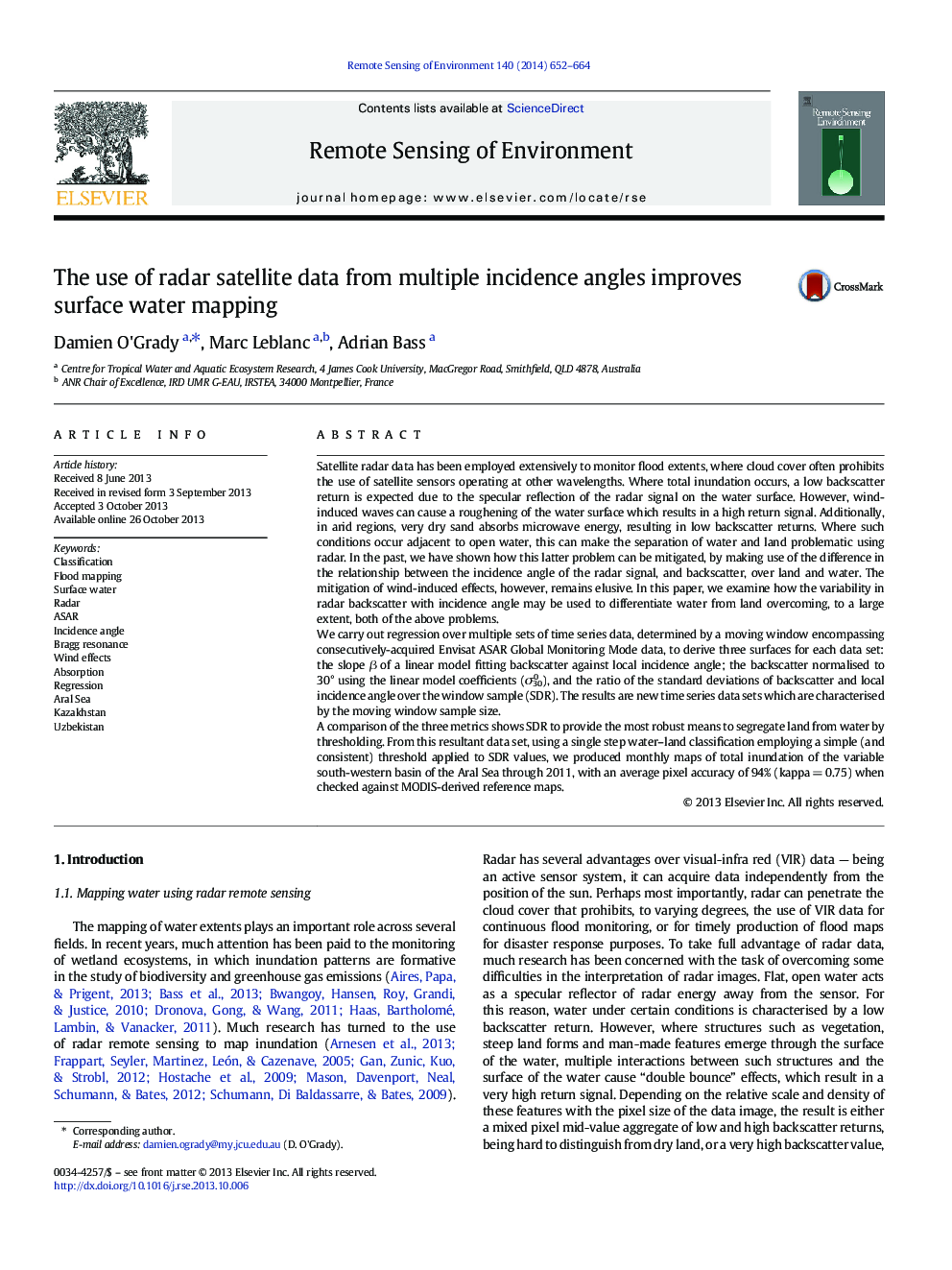| کد مقاله | کد نشریه | سال انتشار | مقاله انگلیسی | نسخه تمام متن |
|---|---|---|---|---|
| 6347081 | 1621260 | 2014 | 13 صفحه PDF | دانلود رایگان |
- Regression is used on multitemporal radar data to map water extents.
- Ambiguity due to wind-induced waves and to absorption in sand is greatly reduced.
- Classification accuracy potential vs. data temporal frequency is tested.
- Water maps with >Â 90% accuracy produced with consistent threshold.
- Global accurate weekly flood maps anticipated with upcoming satellite missions.
Satellite radar data has been employed extensively to monitor flood extents, where cloud cover often prohibits the use of satellite sensors operating at other wavelengths. Where total inundation occurs, a low backscatter return is expected due to the specular reflection of the radar signal on the water surface. However, wind-induced waves can cause a roughening of the water surface which results in a high return signal. Additionally, in arid regions, very dry sand absorbs microwave energy, resulting in low backscatter returns. Where such conditions occur adjacent to open water, this can make the separation of water and land problematic using radar. In the past, we have shown how this latter problem can be mitigated, by making use of the difference in the relationship between the incidence angle of the radar signal, and backscatter, over land and water. The mitigation of wind-induced effects, however, remains elusive. In this paper, we examine how the variability in radar backscatter with incidence angle may be used to differentiate water from land overcoming, to a large extent, both of the above problems.We carry out regression over multiple sets of time series data, determined by a moving window encompassing consecutively-acquired Envisat ASAR Global Monitoring Mode data, to derive three surfaces for each data set: the slope β of a linear model fitting backscatter against local incidence angle; the backscatter normalised to 30° using the linear model coefficients (Ï300), and the ratio of the standard deviations of backscatter and local incidence angle over the window sample (SDR). The results are new time series data sets which are characterised by the moving window sample size.A comparison of the three metrics shows SDR to provide the most robust means to segregate land from water by thresholding. From this resultant data set, using a single step water-land classification employing a simple (and consistent) threshold applied to SDR values, we produced monthly maps of total inundation of the variable south-western basin of the Aral Sea through 2011, with an average pixel accuracy of 94% (kappa = 0.75) when checked against MODIS-derived reference maps.
Journal: Remote Sensing of Environment - Volume 140, January 2014, Pages 652-664
